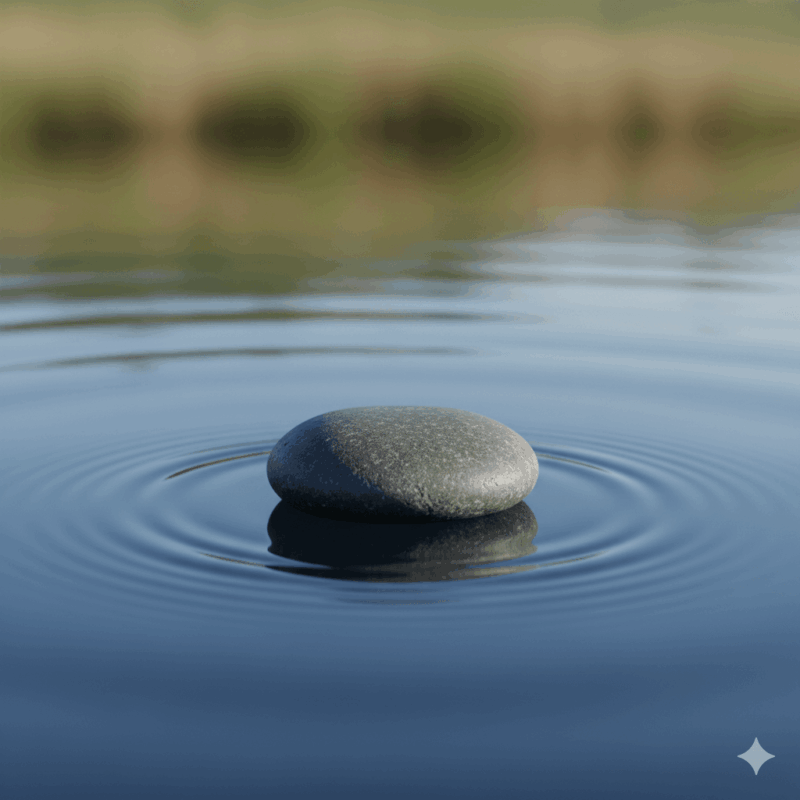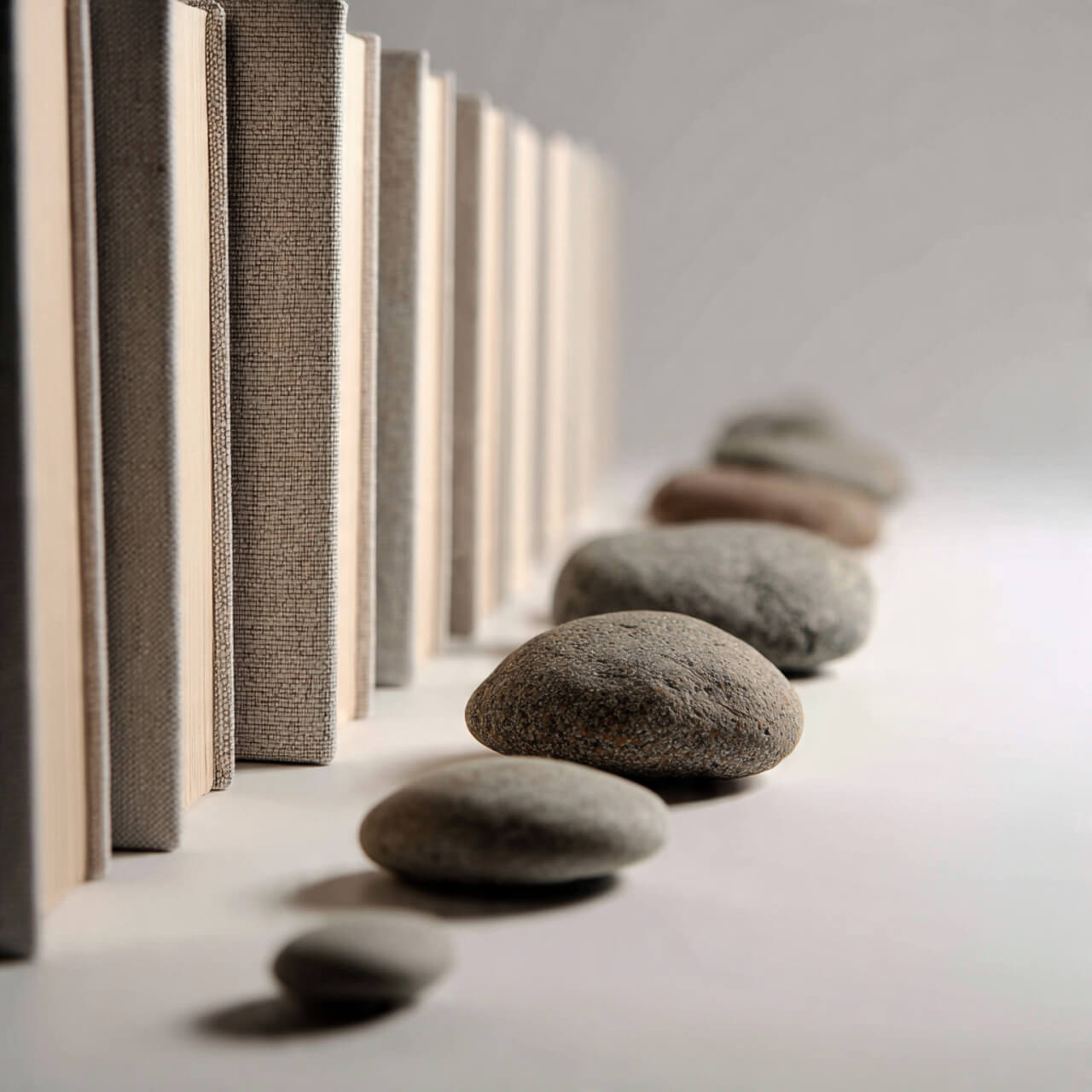Read time: 9 minutes
The Hidden Link Between Stoicism and Habit Stacking
You can read about Stoicism all day — Marcus Aurelius, Epictetus, Seneca, the ancient philosophers of resilience and self-mastery, but without daily Stoic reflection, those ideas stay as words. That’s where morning and evening reflection comes in.
That’s the modern trap. We collect wisdom instead of practising it. We highlight quotes about calm and control, but when real-life frustration hits, the slow commuter, the inbox avalanche, we still react on impulse.
Here’s the thing: the Stoics weren’t just philosophers. They were habit builders before the term existed. Every morning reflection and evening review was part of a loop designed to transform thought into action.
I call this the Stoic Habit Loop — a modern take on ancient Stoic practice, a simple rhythm of reflection, action, and review that turns awareness into real change.

Quick Summary:
Stoic reflection isn’t just philosophy, it’s an early form of habit science. This post shows how morning and evening reflection create a feedback loop for calm, lasting change.
- What the Stoic Habit Loop Really Is
- Stoic Reflection as Reinforcement
- How Stoic Reflection Shapes Your Morning Routine
- The Hidden Connection: Stoicism and Habit Stacking
- Why Stoic Reflection Works
- 3 stoic reflection Actions You Can Take Today
- Everyday Mastery Steps You Can Take Now
- What Comes Next
- Bottom Line
What the Stoic Habit Loop Really Is
Think of it like this:
Morning reflection = intention.
Daily action = experiment.
Evening review = reinforcement.
Together they form a quiet feedback system, a loop that rewires your reactions one day at a time. It’s the bridge between knowing you should stay calm and actually staying calm when someone cuts you off in traffic or your inbox explodes. That gap is where most philosophy dies and the habit loop is what keeps it alive.
In practice, it’s closer to modern behavioural science than ancient philosophical ritual. The Stoics intuitively understood what psychology later proved: what you repeatedly reflect on becomes what you instinctively do.
“First say to yourself what you would be; then do what you have to do.” — Epictetus
He’s saying: decide the kind of person you want to be before you act and then let every action follow that choice.
In Stoic philosophy, who you are isn’t defined by circumstances or emotions, but by deliberate intention.
So if you choose to be patient, honest, or courageous, your job is to live that decision through your behaviour, not just think about it.
It’s a line that could sit comfortably in any habit book today.
Stoic Reflection as Reinforcement
Morning reflection though isn’t just mindfulness, it’s mental rehearsal. When you imagine yourself responding with patience or courage, your brain fires the same neural pathways you’ll need later in the day.
We live in a world of constant alerts and endless scrolls — the Stoic habit loop is a quiet reset button for your mind. Each reflection is a pause that reclaims your attention before the next ping does.
According to a 2021 study in Frontiers in Psychology (“Self-Reflection as a Mechanism for Behavioural Change”), daily self-reflection activates reward circuits linked to motivation and goal persistence. In plain terms: when you review your actions and see small progress, your brain rewards you, encouraging repetition.
The Stoics were doing that long before neuroscience caught up.
Each evening, they replayed the day like an athlete studying game footage — not to criticise, but to strengthen future performance. Reflection was reinforcement.
The funny thing about Stoic reflection is that it grows quietly.
At first it feels like nothing’s changing, yet over time the calm shows up sooner and lasts longer.
So when you start to notice small shifts, the moment you pause before reacting, or breathe before replying and, that’s proof the practice is working
So if you’ve ever wondered why your habits fade, it might be because you skip this step. You’re training your mind but never closing the loop. Discover why habits fade when motivation disappears →
First comes awareness, then consistency.
And with time, those short daily reflections start shaping the person you become.

How Stoic Reflection Shapes Your Morning Routine
Here’s the simple pattern to make Stoic reflection practical:
Morning: Before the day rushes in, ask one question:
“Which virtue will I practise today?”
Choose just one — patience, kindness, honesty, courage — whatever character strength you want to build.
In Stoicism, a virtue isn’t moral perfection, it’s a practical strength you practise daily, like training a muscle for character.
Micro-Action: Look for one real-life moment to express that virtue.
Maybe it’s staying calm when your mind tells you you’re failing at everything, or giving someone the benefit of the doubt when you’re exhausted.
Evening: When the day winds down, ask:
“Did I live that virtue today?”
If yes, note it. If not, note what threw you off. Some days you’ll choose patience and blow it by 9 a.m. That’s not failure — that’s data. The evening review turns mistakes into strategy. Either way, you’re learning.
You’re not alone in this everyone drifts off course; reflection just helps you find your way back.
You don’t need an hour-long ritual, even a few calm minutes between boiling the kettle and switching off the light can close the loop. You just need repetition.
That’s the Stoic habit loop in action — intention, experiment, reflection.
The Hidden Connection: Stoicism and Habit Stacking
This is where Everyday Mastery meets ancient wisdom.
Stoic reflection naturally stacks onto habits you already have. Morning reflection after your first cup of coffee. Evening review as you brush your teeth.
That’s habit stacking — the simple principle of linking a new action to an existing routine. It’s how small, calm rituals eventually become automatic. See more practical habit-stacking examples →
Marcus Aurelius wrote:
“When you rise in the morning, tell yourself: the people I deal with today will be meddling, ungrateful, arrogant…”
It wasn’t negativity, it was preparation.. A mental warm-up stacked onto waking up.
If you’re already using the Non-Negotiable Habit Tracker, add two new habits:
- “Morning reflection (2 min)”
- “Evening review (5 min)”
Use a notebook, note app, or journal for your Stoic reflection — the tool isn’t what counts the routine is.
You’ll see the loop build quietly over weeks its the kind of progress that compounds without fanfare.
When reflection becomes habit, reaction turns into response.
Each small review of the day makes calm a little more automatic and that’s how Stoic reflection quietly rewires your mind.
Want to see how mindfulness fits into the Stoic Habit Loop? Read How to Stop Living on Autopilot for three Buddhist-inspired presence practices that strengthen awareness between each habit loop step
“Philosophy becomes habit when reflection meets repetition.”
(Everyday Mastery, 2025)
Why Stoic Reflection Works
The Stoic loop mirrors what modern psychology calls the feedback principle, learning improves when you reflect on your actions and adjust what you do next This is how Stoic emotional control becomes automatic and not through willpower, but through pattern recognition.
It also taps into your brain’s reward system: small bursts of dopamine appear when your behaviour matches your intentions, the quiet satisfaction that keeps habits going. That’s why reflecting on virtues works better than punishing mistakes, it rewards living in line with your values, not guilt.
In short: reflection rewires your nervous system to link self-correction with calm reward, not guilt. This is why Stoic habits stick even when motivation fades — they’re built on self-awareness, not willpower. Learn how to build habits that survive motivation dips →
Still, that quiet voice of self doubt always finds a way to slip in, doesn’t it? even with all the science and wisdom behind it, the hardest part is what happens inside your own head.
“Waste no more time arguing what a good man should be. Be one.” — Marcus Aurelius
Modern Stoic writer Donald Robertson puts it simply. “Stoicism was the original cognitive behavioural therapy, daily reflection is how you train emotional resilience, one thought at a time.”
In other words, reflection isn’t passive but it’s daily strength training for your mind.

Mr Critic Moment:
“So you journaled once and still got angry? Still felt anxious?” Mr Critic whispers: “You’re doing it wrong.”
But Stoicism isn’t about erasing emotion, it’s about noticing it without being hijacked by it. Every quiet repetition rewires something. That’s how calm slowly replaces critique.
Here’s the calm truth: mastery isn’t found in a single insight. It’s built through repetition of showing up again tomorrow, notebook in hand, ready to try a little better.
That quiet persistence is the real victory.
3 stoic reflection Actions You Can Take Today
- Ask one Stoic question before you check your phone: What virtue matters most today?
- Note one action that expressed that virtue — however small.
- Review your day gently before bed — one lesson, no judgement.
Everyday Mastery Steps You Can Take Now
- Link reflection to something you already do — coffee, commute, lights-out. Small cues build consistency.
- Use the Non-Negotiable Habit Tracker to record your daily virtue check-ins.
- When your inner critic appears, remind yourself: noticing is progress. Awareness is the first repetition of change.

Journalling Prompts:
When today did I act with the virtue I chose this morning?
Where did I get pulled off track, and what might help next time?
What small win can I quietly celebrate before bed?
That’s it. A few sentences, a bit of awareness, and the loop continues.
If you want to see how the Reflection Habit Loop fits into a full morning flow, read The Stoic Morning Routine. It shows how to combine journaling, reflection, and mindful action into one consistent start to the day.
What Comes Next
What Comes Next
In the next post coming up — Train Calm: How Stoics Rewired Their Emotions (and How You Can Too) — we’ll explore how Stoic practices help you manage emotional reactivity. Because reflection is only the first step; the real challenge is staying calm when life tests you.
Next, dive into how Stoic focus survives modern distractions — from endless notifications to racing thoughts — in my article “Break Free from AI Overwhelm with Stoicism.” Because mastering reflection means little if the world keeps pulling you away from it
Bottom Line
Real Stoicism isn’t about suppressing emotion, it’s about training your responses through repetition.
Each reflection is a quiet rep of self-control.
Each review, a small return to alignment.
When reflection meets repetition, philosophy becomes habit — and habit becomes Everyday Mastery.
Found this helpful? You can buy me a coffee to support more writing like this. Every cup helps me keep creating resources
If you’ve ever felt like you’re just moving through the motions, this guide on how to stop living on autopilot shows how to bring that same Stoic reflection into the smallest daily moments — no meditation required.
Kel is the writer behind Everyday Mastery, where she shares the real, messy, and meaningful process of building habits, resilience, and self-belief from the ground up. Her writing blends ancient philosophy with modern science, always focused on small, practical steps that lead to lasting





